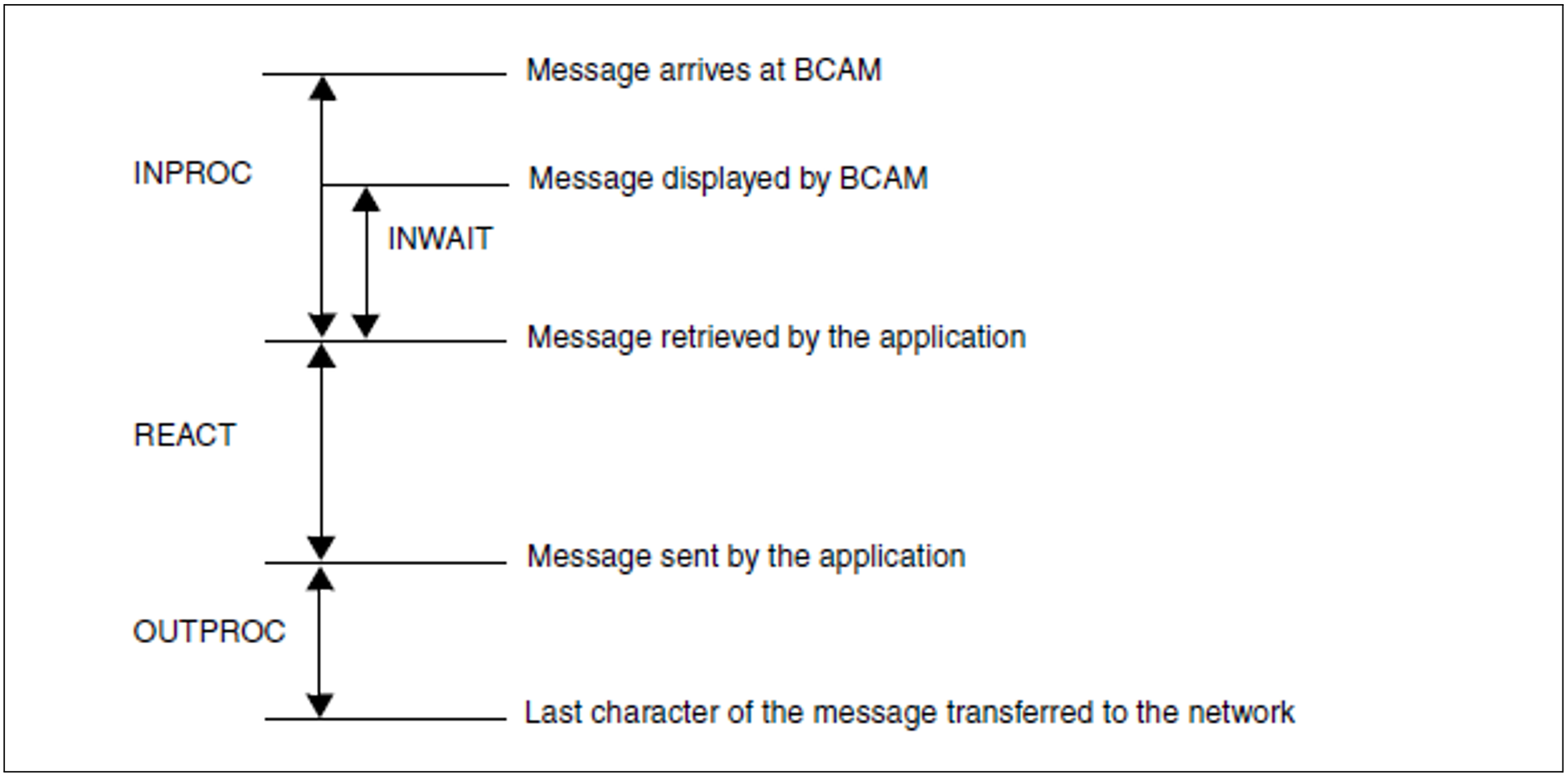The phases of an OLTP transaction which are relevant to performance are:
Network runtime up to the server
Waiting for acceptance of the transaction by BCAM
Processing by BCAM and forwarding to the TP application (e.g. openUTM)
Waiting for acceptance by openUTM
Processing time of the transaction, controlled by openUTM with the following detail phases:
CPU requirement of the application / of openUTM
(with wait for CPU allocation)I/O processing in the application / in openUTM
(with wait for the I/O operation to end)Waiting for job acceptance by database tasks
CPU requirement through database activities
(with wait for CPU allocation)Processing the I/O operation in the database task
These detail phases can occur several times
Sending the response to BCAM
Waiting for auf acceptance of the response by BCAM
Processing by BCAM
Transfer of the output data for network transfer
Network runtime up to the client
Only phases 3 - 9 can be measured using BS2000 resources (principally using openSM2, see the “openSM2” manual [18 (Related publications)]).
For phase 2, BCAM supplies an indicator of possible delays. openSM2 presents the times collected by BCAM in graphical form in the monitoring routine BCAM-Connection:
Figure 15: BCAM times
The following times are correlated:
INPROC: Phases 3 and 4
INWAIT: Phase 4
REACT: Phases 5 - 7
OUTPROC: Phases 8 and 9

